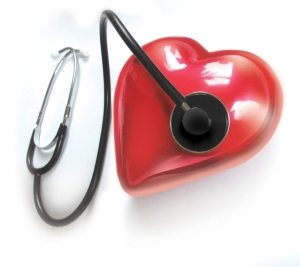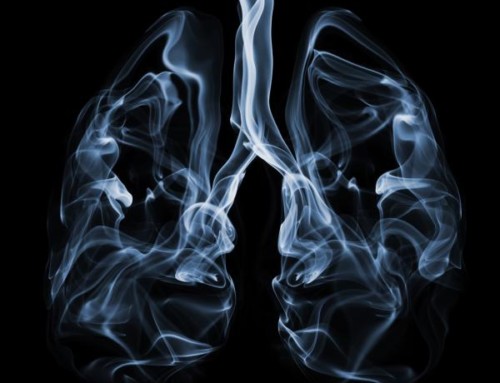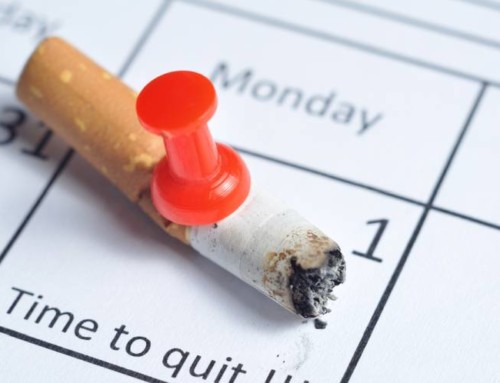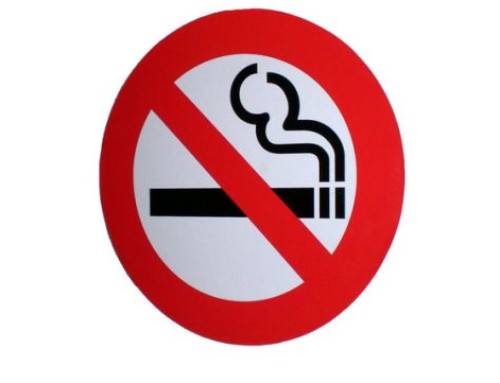Heart and Circulatory System Problems
Heart disease is not caused by unhealthy eating alone, or by lack of movement alone, but is a result of all our unhealthful habits. It is a well known fact that the presence of high quantities of saturated fats in the diet is directly related to heart disease. Many heart conditions can be reversed by switching from an animal-based diet to a plant-based diet. The Informative movie “Eating” provides testimonials and explanations of why it works.
However people living in the nineteenth century and earlier consumed quite large quantities of dairy and at least small amounts of meat, and heart disease was very uncommon at that time. Dr. George Malkumus, creator of the Halleluiah Diet, who by switching to vegetarian high-raw diet was able to heal from colon cancer, as well as helping thousands of people reverse numerous serious degenerative conditions, many years later while staying on this very healthy diet experienced a stroke himself. When approached by puzzled health-seekers and skeptics, he explained that it was due to the fast pace of his life and overworking. Dr. Trall once said: “Life cannot be both intensive and extensive.” Stress and workaholism are commonly recognized major risk factors in cases of heart and circulatory diseases, as well as many others.
I even read some kind of research that tried to prove that a high-fat and cholesterol rich diet was the key to a healthy heart and blood vessels.
These are some really shocking quotations:
“He doesn’t realize how deadly carbohydrates like fruit, bread, whole grains, cereals, sugar, flour, rice, legumes, potatoes and soy really are.”
“Heart disease is caused by excessive blood insulin from eating fruit, whole grains, cereals, breads, pasta and sugar. If you believe heart disease is caused by eating saturated fats, you have been brainwashed.:
If fruit is poison and deadly harmful for us, what is then good? If a diet that consists of 70% fat promotes a healthy heart and blood vessels, like these guys recommend, how come cardiovascular diseases are pandemic among American people who swim in fat, while at the same time the bears next door, bingeing on raspberries all summer, have no idea what these swear words mean?
Hope you did not get too confused after reading this. Let’s try to make sense out of all of it.
Understanding Heart Disease and Circulatory System Problems
Research shows that in the body of a few weeks old infant, fatty streaks start appearing in the perfect-at-birth blood vessels. At teen age they are turning into fibrous plaques, and by 30 most people have well-developed plaques. Usually by age 45-50 heart disease manifests. The condition when a person has a lot of fatty plaques is called arthrosclerosis.
Arthrosclerosis makes blood vessels stiff and prevents free blood flow to the extremities: heart, brain. As a result we get a number of circulatory system disorders: blood pressure increases, and because the body treats plaques the same way as it does injuries, a lot of blood clots develop. Over a period of time blood vessel passages become very narrow and it is just a matter of time until a blood clot may block an artery leading to the brain. If that happens, blood flow will be cut off from the brain, and the brain tissues will start slowly dying. We call it a stroke.
Depending on whether and how fast the blockage will stop and blood flow will resume, determines how serious the consequences are and to what degree the body will be able to repair or compensate the damage. If blood flow is blocked in the arteries leading to the heart, it will cause a heart attack.
High blood pressure, arthrosclerosis, strokes, heart attacks, heart disease. In essence these are all the same disease, because they have the same cause: impairment of blood circulation by blood clots and plaque that hardens and narrows the blood vessels. Heart attacks or strokes do not just happen and come from nowhere, even though it might be different in certain cases of extreme stress. Normally everything starts from those fatty streaks. Healthy blood means no cardio-vascular problems. Simply purifying the blood and blood vessels and keeping them clean will eliminate most problems mentioned above. How difficult is it to do this?
They tell us that since formation of fatty deposits on blood vessels is common, it is almost inevitable. However, plaque is not a plague, as many think.
Is it Possible To Avoid Atherosclerotic Plaque Formation?
Yes, it is. One of the most successful at this particular task is the chimpanzee. It never suffers high blood pressure or heart problems (unless it starts living in an artificial environment). Since chimpanzees in their genetic make-up are the closest of all animals to humans (by 99.4% we are identical), lets look at some of their insider secrets.
Diet. Chimpanzees eat fiber-rich diet sandwiches of bananas and leaves (they literally roll the bananas into leaves); about 50% of their food ratio are fruits and from 25-50%, depending on the season,are greens. In the spring about 10% of their food consists of flower blossoms. They also consume up to 5% seeds. In the month of November they add small amounts of insects and even small animals to their diet.
Chimpanzee Physical Activity Levels. Constant, 100% outside in the fresh air.
Addictive habits: non-smokers, non drinkers (except for occasional fermented fruit) and not drug users.
Stress level: experience stress often or rarely depending on the amount of food available.
Major concern: how to protect themselves and their little ones from predators.
Clearly, we are not chimpanzees. The tasty appearance of a fresh insect is not likely to make you ecstatic. However, principles of living an active life, spending a lot of time outside, having low stress levels and eating natural foods and drinking pure water are equally important for animals and people.
Today not only monkeys (and the rest of wild animals also) are able stay free from heart problems. On this planet there are still a few groups of people that have no idea what heart disease is. For example it is virtually unknown to Georgian, Abkhasian and Hunza people. Even just slightly over 100 years ago, it was so rare among humans world wide that it was not even mentioned in medical dictionaries. We are not born to suffer high blood pressure and stroke!
So Where Did Heart Disease Come From? Causes
Before we answer this question, let’s compare the list above with the lifestyle of an average American.
Diet. Standard American Diet or SAD diet usually consists of huge amounts of French fries, hamburgers, sandwiches with white bread and veggies of unknown color (pale and withered), diet-coke and a chocolate chip cookie for dessert.
Some of us eat better than that. We cook our veggies, eat fish (full of mercury) for protein, buy soy milk or regular milk from containers (pasteurized; “enhanced” with artificial and vitamins and minerals that the body is unable to absorb; and rinsed with poisonous chemical iodine when reused) to make sure we’ve got enough calcium; as well as we eat a “pesticide” apple a day to keep doctors away; cook lasagnas with whole wheat pasta and make our children eat cooked spinach and boiled broccoli – food, where 100% of enzymes are killed and a lot of vitamins and minerals are either destroyed or damaged by heat.
We buy “spring” chlorinated or ozonated water in bottles because this is the best we can find, yet this does not change the fact that this water, with all its chemicals, cannot support health in the body. By the way, did you notice that rivers and springs always flow in curves, not straight? This water is alive and is the one that satisfies our taste buds and body needs. If you have ever tried it, you remember: you wanted more and more and more of it. After being bottled, water quickly dies and becomes stale. That’s why it is mandatory to add ozone or chlorine to keep it free from pathogens.
Most of us snack on regular or organic chocolate bars, granola bars, sesame bars and chips. It is all highly processed foods that have very little nutritional content of the natural foods they were made of, and are loaded with sugar, caffeine, theophylline, theobromine and a bunch of deadly chemicals.
We look for the words fat-free, sugar-free, decaffeinated, natural and low-calorie on labels and even, probably, buy booster shakes and multi vitamins. What we do not realize that these are all marketing words and they have nothing to do with the quality of the product. 0% fat content, for example, is theoretically impossible, because even a carrot contains fat (do you remember a thin film floating on top of a glass with fresh carrot juice), so do corn, nuts and other natural foods. Zero fat just means this particular food item has a bit less fat than many others.
Most multi vitamin supplements are synthetic, and contain petroleum as an ingredient (particularly vitamin E, C, as well as most colourings). When these vitamins enter our body, it does not know what to do with them, because they do not contain all the elements needed for their absorption. They are not even totally different in their chemical structure, they have “upside down” molecules, which you can compare with trying to put a right glove onto the left hand. Ascorbic acid (vitamin C), is usually eliminated by the kidneys within 24 hours.
Pesticides, heavy metals, food and cosmetic ingredients constitute a great part of our diet and existence; and we already cannot imagine our life without colorful cereal boxes, cans and plastic bags of “convenient” food.
Physical activity. Most of the day we sit in poorly ventilated buildings at the computer. Sometimes we exercise our butt by walking a few blocks, walking up the stairs and a monthly walk. Once in a while we go to the gym, after which we sit down again and stare at the computer with a sandwich in our hand.
Addictive Habits. At approximately the same time we begin school we face the offers to try a cigarette. Some get into it now, some do later. When we get to the teenage years, somebody starts telling us that we are now big enough to try some wine or beer, to be like an adult. We try, and even though we don’t quite feel like an “adult” at the first try, we start associating pleasure with drink. Some might even try street drugs, others those that are prescribed.
Stress level: The time we struggled for physical survival is far in the past (Is it truly?). The challenges we face today are mostly related to paying bills, risks related to running a business, social isolation, low self-esteem and lack of love. We accumulate fear, guilt and anger and pass it onto our kids. We learn to hide our insecurities, and pain behind smiles, and try to move on.
As you see, the difference between the two lists is enormous. No wonder we get sick. However, the good news is that cardio-vascular diseases are not only totally preventable, but also relatively easy to reverse. In fact heart disease is one of the most easy to reverse diseases, compared to, let’s say, cancer. All it takes is to do what monkeys, Abkhasians and Hunza do, and to live as they do.
Easier Said Than Done?
Every change should be gradual. A realistic approach to the situation you are in is vital. But unless we change what we do and how we live now, we will continue getting the same results we are getting.
Taking into consideration all risk factors and improving one’s lifestyle overall is essential for preventing or reversing any type of heart condition.
There Is No One Sole Key to the Door of Your Heart
Because the heart is the most important organ in our body, it is carefully protected with connective tissues and bones and placed in a very secure position in relation to other organs. The body also tries to keep it free of harmful chemicals and other toxins as much as it can. The body would prefer to keep junk in fat cells, extremities, wherever, but it tries hard to keep the heart well and running – its survival depends on this organ.
What this means is that if the heart is affected by a disease, our other organs and tissues, particularly the glandular system, including adrenals, pituitary and thyroid, liver and kidneys are also in trouble. Treating heart problems alone will not make too much sense. If other organs will not start functioning more efficiently and instead will become overloaded with drugs, the side effects will not keep you waiting too long to manifest.
What would make even less sense is to fight “bad cholesterol” (or HDL), which is not bad in itself in the first place. The truth is that there is no good or bad cholesterol, because cholesterol is cholesterol and it is always the same. (Now get ready for some technical stuff. If it seems overwhelming, just skip it).
Understanding The Role of Cholesterol. Good and Bad Cholesterol
The difference between lipoproteins (fats combined with proteins) containing “bad” and “good” cholesterol is in its quantity, not type. Lipoproteins are produced by the liver and are used as a transport vehicle for fats. Their purpose is to carry fats digested after a nice big meal from the digestive tract into the blood, which is mostly water.
Just imagine trying to mix a cup of water with some olive oil. Do it until miniscule molecules of fat become evenly distributed in water without creating a thin fatty film on top of the glass! Not so easy. However, the body handles this task perfectly: like a detergent that removes greasy stains from clothes, bile sticks to the fat and breaks it down into small droplets that body’s enzymes can “digest” or break down into particles small enough to go through the intestinal wall. Within the intestinal walls, these fat droplets are packed into transport vehicles – lipoproteins, which will travel from there into the lymphatic vessels and further to all parts of the body.
These fatty vehicles (lipoproteins) are produced by the liver. As they travel through the body, fats are picked up and utilized by muscles, including the heart muscle, mammary glands and wherever they are needed for making hormones, new cell membranes or other components, or storing for future use. As these “fat cars” move through the body, they unload and “shrink”, and after that come back to the liver to be dismantled and reused. So “bad” cholesterol is a passenger of the fat cars (still full of fats and proteins), that are on the way to the cells. Doctors call these lipoproteins or cars LDL. After LDL give off most of their fats to the cells, a great amount of cholesterol still remains there. This is when they start calling the lipoproteins HDL. HDL is said to carry “good cholesterol”. HDL are the same vehicles as LDL, only they carry cholesterol and other fat remnants to the opposite direction – to the liver for recycle purposes. When fats carry good cholesterol, they actually contain more of it than when they return the bad one to the liver; but because their presence represents returning from the cells to the liver they are associated with good fat metabolism and as a result reduced risk of arthrosclerosis (clogging of the arteries with fatty material) and heart attacks.
Cholesterol is not our enemy. In fact, our liver makes from 800 to 1500 ml cholesterol daily, much more than you would consume if you ate a huge steak! Cholesterol is absolutely necessary for making bile, hormones and vitamin D. Without it you would not be able to have kids!
Cholesterol becomes a problem only if it deposits in the artery walls. These accumulations lead to arteriosclerosis, an accumulation of fatty material on the inside wall of blood vessels, which leads to all kinds of heart problems.
Hopefully by now you figured out that your enemy is not excess of bad cholesterol, insulin or whatever other substance your body makes (if it is made there, there is probably a reason) and that by treating solely a heart problem or circulatory disease you will not get rid of it. There is no particular food that “causes” heart disease and there is no disease that would affect only one organ, and therefore there is no magic pill. A holistic approach should be used, taking into consideration all risk factors, improving functions of all organs and systems. Remember: your body always strives for survival and homeostasis. If you give it all it needs, it will heal your heart on its own, pretty much like it does when you get a cold.
How Can Our Program Help to Improve Cardiovascular Health?
Our program contains a lot of elements that can help improve both your present condition and lay a foundation for future improvements.
#1 Healthy Nutrition With Emphasis on Alive Food, Consisting of Elegantly Prepared fresh Fruits, Vegetables, Greens, Sprouts, Seeds and Nuts.
Fresh greens, fruits, vegetables, nuts, seeds and sprouts are the main ingredients of our meals. They are full of fiber, that is literally acting like a magic sponge able to absorb more toxins than its own volume, and that, like a good brush, will start cleansing your blood vessels. Minimum processing is very important for fiber to act this way, because cooking, frying and steaming, even though in less degree, softens it and makes it much less effective. The most important aspect of our meals is that they provide our bodies with high quality vitamins, minerals, proteins and other nutrients that are building blocks of tissues and, as a result, health. Dr. Chopra stated that within a year almost all body tissues are replaced with new ones. Just think about it: if you provide your body with better food material for just one year, by the end of that year your body will be able to “redo” and create better tissues in your heart, lungs and every part of your body!
#2 Fresh squeezed vegetable juices, including wheat grass juice, which are part of the program, are liquid foods up to 90% of which (according to Dr. Joel Robbins) are absorbed and utilized by the body.
Juices, which are not designed to be a regular food, provided that you have perfect health and consume food that is high quality and rich in nutrients, are a great restorative tool for damaged body organs. Wheat grass is extremely rich in chlorophyll, which is so amazingly similar in its chemical composition to our blood, that drinking it can be compared with a healthy blood transfusion.
#3 A powerful highly effective whole body detox program,
including whole digestive tract, liver, gall bladder, kidney, blood and parasite cleanse, accomplished by means of herbal teas and specially prepared cleansing drinks, not only gives you a chance to get more energy, improve sleep and make your body work more efficiently, but also helps get rid of unhealthy food cravings and get an appetite for healthy foods. Detox makes transition to a healthy lifestyle much easier. And remember, if the heart is in trouble, all systems of the body are. If they get better, the heart will too.
Spa therapies, such as live and dry blood analysis, ear candling, colon hydrotherapy, aromatherapy, facials and massage (and many more), are available at the site for you to further enhance the program (and just for the pampering!).
#4 Focus on Weight Loss
Most people, going through the 14 and 21 Day Physical Health program lose at least 5 lb, and up to 25 lb. Obesity puts stress on the heart, and is a major risk factor of heart disease. Working on it is a priority, if you want to have a healthy heart.
#5 Fitness Component
Workouts with an experienced fitness trainer are definitely an important part of a healthy lifestyle beginning and the turning point of the whole life direction.
If there was only one word that would describe us it would be
#6 Life Changing Education
Daily Educational Lectures and Videos are eye opening and inspiring.
These are just a few things you will find out:
- Why Horses Are Never Constipated (And how to experience it yourself)
- Why Calories Have Nothing to Do With Weight Loss
- Which Deodorant You Can Have For Breakfast
- How to Prevent and Reverse Cancer, killer #1 in America
You will not hear boring lectures on the food pyramid, we promise!
#7 We will touch the root of your problem for its healthy, leafy crown
In finding the cause we find the cure. It is especially true for the heart. Be it insecurities or inner resistance to forgiveness, hatred to yourself or a habit of getting into abusive relationships, it all might be the root cause of your heart problems. Understanding the cause of a behavior pattern at a very personal level, as well as cultivation of motivation to change, help find freedom from this behavior. Thought provoking sharing time will give you insight to what brought you to where you are at, as well as it will create a synergy of thoughts with other group members.
Everything we do comes from the heart. If you would like to experience personal touch, unconditional love and acceptance, our caring team, personal approach and small groups are here for you.
Begin your journey now, not tomorrow. An instant decision to take a path of health will change your life for better here and now. You may still have some ways to go, yet remember: you are predetermined for success when you believe it. When you believe it, you will see it.
Caution! There is no quick fix. We do not promise that after you finish our program you’ll be free from hypertension or any other disease. So won’t any other wellness program. It took time to get to where you are at; it will take time to get well. We only help you to start the process and get all the info you need to reach your goal.
Everything Depends on Your Motivation and Action!
In some cases, damage to the heart or other organs might be so extensive that it is impossible (or extremely difficult) to eliminate it completely. Yet improvements are possible in almost any case. It is also important to make changes gradually and work with your medical or naturopathic doctor when you do them, especially if it is an advanced condition. Our program does not replace and does not intend to undermine any medical advice.
Attention! Our program is contraindicated for people who recently had a heart attack or stroke or any heart surgery (less than 6 months ago), or have blood pressure over 200/120 or some other serious heart and circulatory abnormalities. We do a thorough prescreening before our clients arrive.
If you have a concern, please call one of our program consultants at 1-888-658-3324 if you had a recent surgery or have uncontrollable blood pressure.





